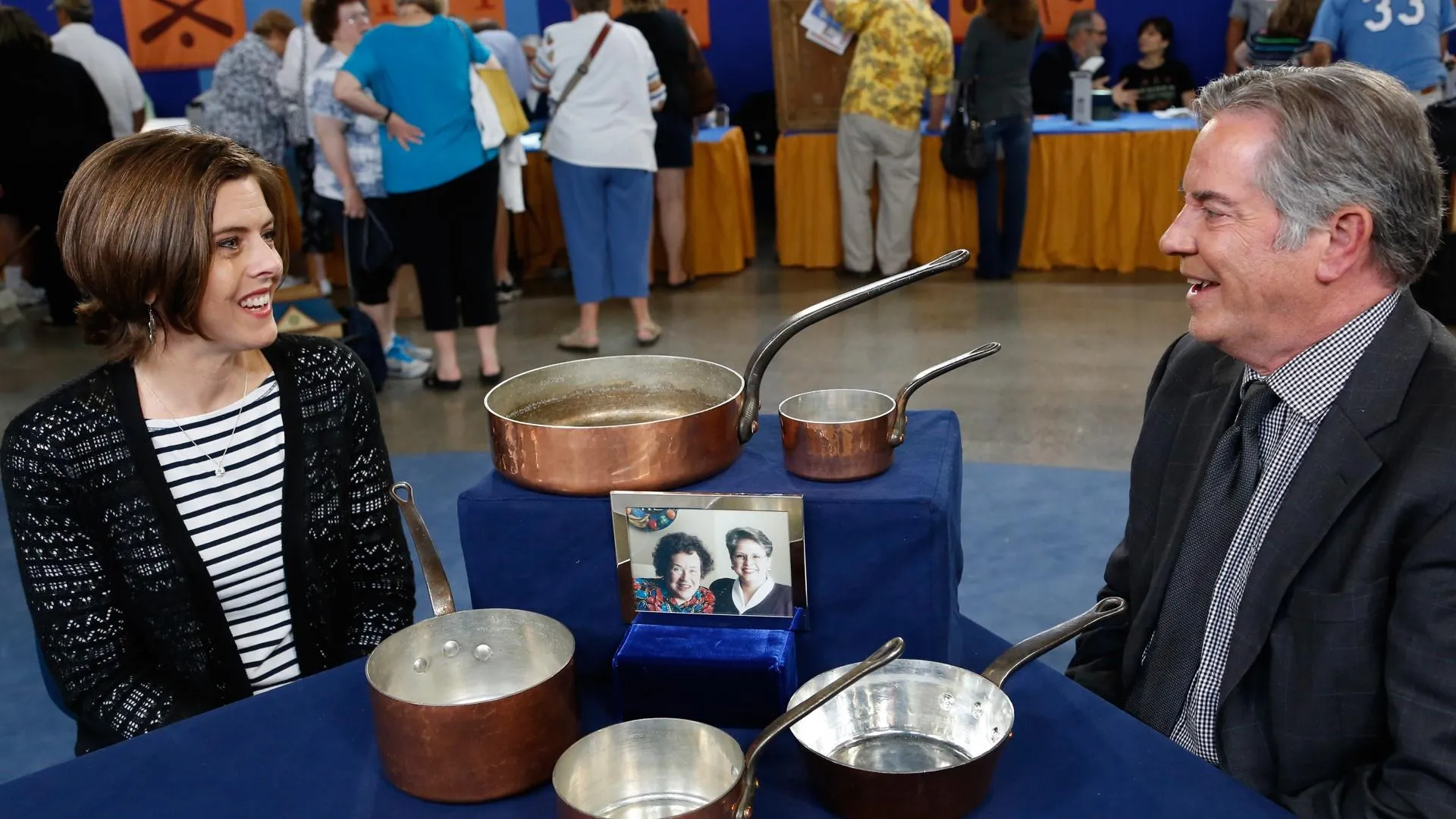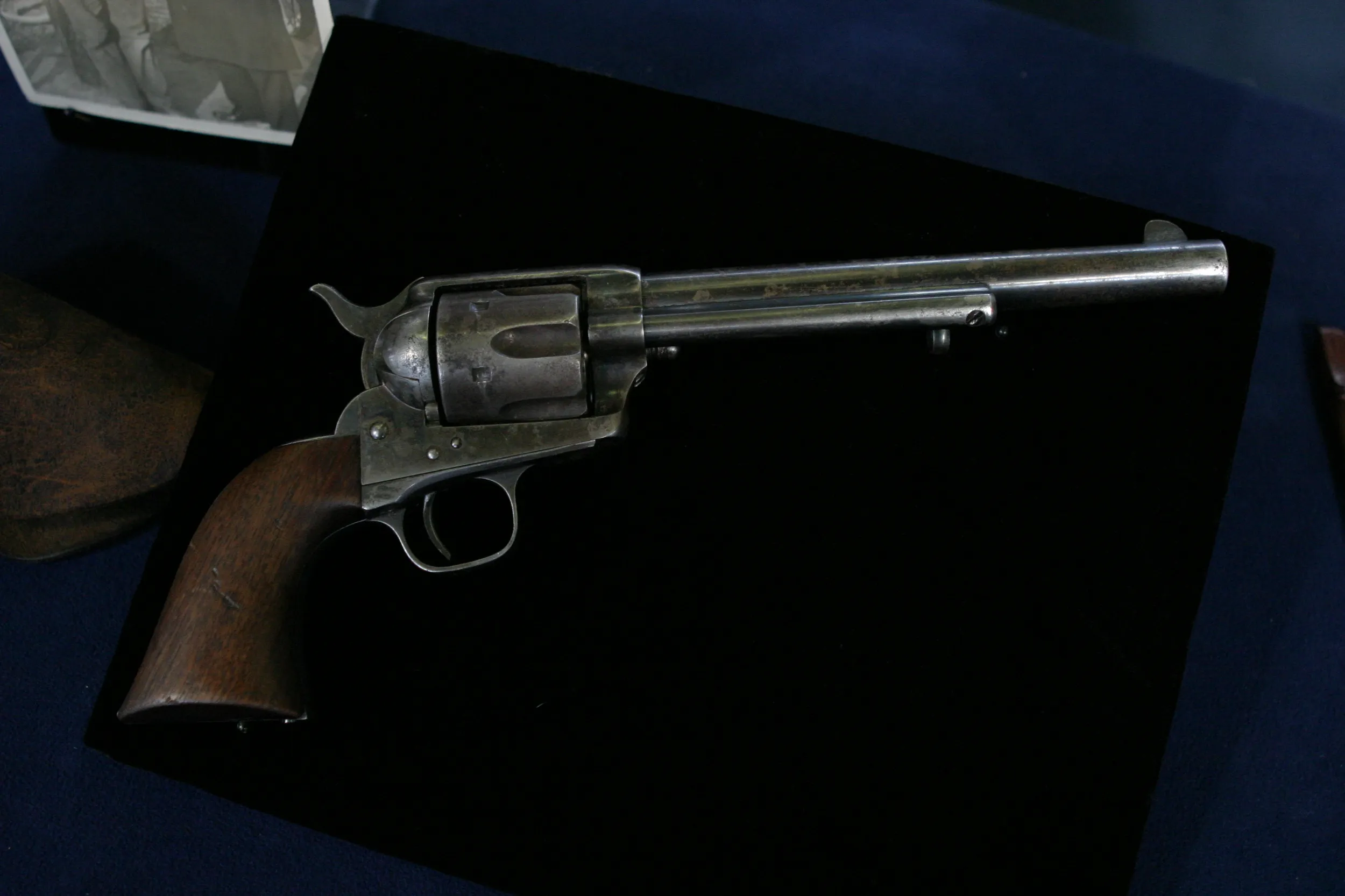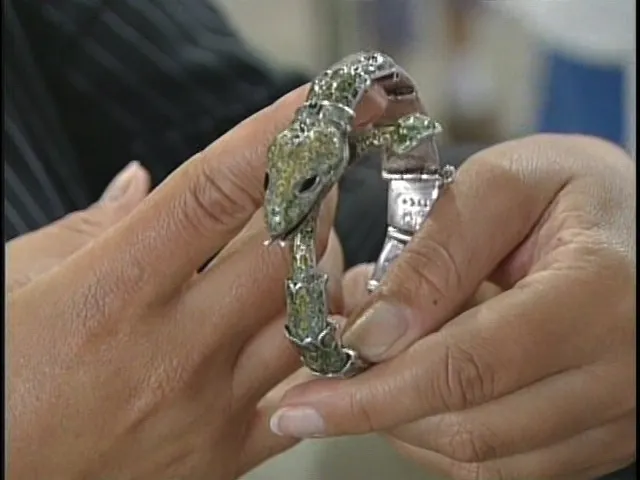GUEST: I really don't know a whole lot about them. They were clocks that my grandparents had. Now they're mine.
APPRAISER: I immediately recognized them as the product of a company called Ansonia Clock Company. They were centered in Brooklyn, New York. And they were a huge company. They were formed by a man whose name was Anson Phelps. Ansonia was a very successful company in the sense that they had hundreds of different models and hundreds of different workers working for them, and they were in business from 1850 to 1929. And these are two examples of one of their more popular clocks. And it shouldn't come as any surprise to us that they are referred to as "swingers." And we feel as though the initial offering, which is this one, was probably introduced about 1880. And collectors refer to this as the tin can model, and this is the first form that they took. And they were popular in shop windows because it caused the public passing by to slow down and take a look at such an unusual clock. And it was popular for roughly 20 years when this model was introduced, which has the sphere. And very often, these were either green or blue. And this is the model that they made the most of. The bases that these were made of are referred to as pot metal. That was a substitute for a more expensive bronze. The Ansonia Clock Company had a very long career, and in 1929, when they went bankrupt, their assets were purchased by Soviet Russia, and all of the assets were delivered to the Soviet government. In today's market, a clock like this would retail for between $2,500 and $3,000.
GUEST: Wow.
APPRAISER: And that's true of both of them. It doesn't matter whether it's the very first model or the second model. They both retail for about that price.
GUEST: Wow, that's great.











